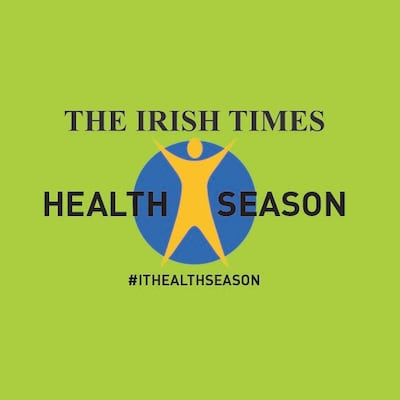Whether it’s a smart watch, a fitness tracker or a virtual reality headset the use of wearable technology has become commonplace in Ireland in recent years, with people integrating it into many aspects of their lives.

People are using smart watches to record health information such as VO2 max (the volume of oxygen your body uses while exercising hard), resting heart rate, sleep patterns and various other health and wellness-related variables. In many cases they are utilising this data to understand and improve health and for lifestyle guidance.
Beyond counting steps or calories burned, however, for healthcare professionals and healthcare systems this increasing use of wearable devices offers an incredible opportunity to improve individual and population-level health outcomes. That’s because wearable technology, properly integrated in healthcare systems where data is interoperable – that is shared rather than siloed – can play a key role in understanding the key factors which affect health at a population level and can deliver actionable insights to improve health and wellbeing.
At an individual level, where treatment and cure of already existing illness are the issues, they also offer potential for being part of the solution, in turn alleviating the burden on an already stretched health service.
READ MORE
EY’s Future Consumer Index of more than 22,000 global consumers published finds that people have embraced tracking of their own data and use tracking apps regularly. Close to half of survey respondents (46 per cent) track their exercise, almost four in 10 (38 per cent) track their heart rate, one third (33 per cent) track their caloric intake and one in four (25 per cent) say they follow a meal plan prepared by an app.

Here in Ireland there is a strong appetite to move towards a digitally-enabled healthcare system and the sharing of health-related personal data if it can be leveraged in the right way to manage and improve health. Last summer EY surveyed more than 1,000 people in Ireland as part of our global Consumer Health Survey. We found that seven in 10 (72 per cent) were in favour of automatic electronic sharing of their personal medical information within the healthcare system.
We also found a similar majority (70 per cent) are willing to share health information captured by a wearable device with clinicians, while people are also strongly in favour of sharing biometric (78 per cent), lifestyle (75 per cent) and genetic (67 per cent) data with the healthcare professionals managing their care in order to improve overall health outcomes.
Sláintecare, our national health strategy, is focused on delivering the right care, in the right place, at the right time. To ensure that data, analytics, artificial intelligence (AI) and wearable technology are supporting the realisation of this strategy, there are a number of challenges to be overcome.
From the perspective of wearables – or indeed any other modern technology solution – some of the challenge lies in how they are deployed in an integrated way that links data from the individual to the system, which protects patients’ privacy and rights, and which assures the right clinical oversight. Members of the population can wear a 24-hour blood pressure monitor to guide treatment of hypertension. However, typically the device won’t “speak” directly to health information and communications technology (ICT) infrastructure so the data generated cannot be leveraged in real time – or in reality anything close to it. Instead it needs to be downloaded, uploaded, and analysed. This type of siloed data is all too common across the health system with monitoring devices.

At present our health ICT infrastructure does not permit the required flexible data-sharing and ultimately the usability of health data. There is also a gap in the clinical education of medical professionals on how data and analytics can deliver care to individuals and populations that will need to be addressed.
Population analysis powered by the data from wearable technology can enable risk stratification according to specific lifestyle and risk factors and “give advice” based on an individual’s data-driven wellbeing profile. In extreme cases wearable devices could be life-savers if enabled to detect and alert critical incidents to appropriate clinical services.
While their use is still at an early stage globally there have been a number of encouraging studies, including a small US trial of the remote patient monitoring wearable BioStamp nPoint system, which suggested accurate and dependable data for biometric monitoring in clinical and remote settings was being delivered.
Additionally, wearables can enable younger members of the population to take responsibility for their own health in very meaningful ways that will yield massive benefits in the long term.
Personalised lifestyle advice or clinical interventions can be generated by indicators picked up by a device at a very early stage. Innovation like this is critical – we have an ageing population combining with increasingly individualised models of care meaning that requirements around healthcare provision will only increase in the coming years and technology such as wearables can improve population health outcomes and healthcare delivery.
Integrating wearables with AI and Generative AI offers even more potential. While AI has been deployed in areas such as mammography for some time, Generative AI can potentially detect and explore new and more complex patterns in the outputs from wearables that can be applied to a range of different scenarios to see if there is a correlation between them. Data beyond pure diagnostics (for example, lifestyle risk factors) can be incorporated into algorithms and combined with data from mammography, for example, to enable us to understand far earlier the likelihood of developing breast cancer – and therefore the ability to intervene through lifestyle or other factors to manage this risk optimally.
Irish healthcare leaders have the opportunity to build on progress to date and to take full advantage of wearables’ data to realise the full benefit of some of the incredible technological advancements we are seeing around us. Research is telling us that the health benefits at both individual and population levels are significant for current and future generations, and that the time to act is now.
- Dr Mary Coghlan is a partner at EY Ireland where she leads on health data and analytics. She is a qualified medical doctor, actuary and analytics expert who supports organisations to use advanced health analytics to support better health outcomes for populations











